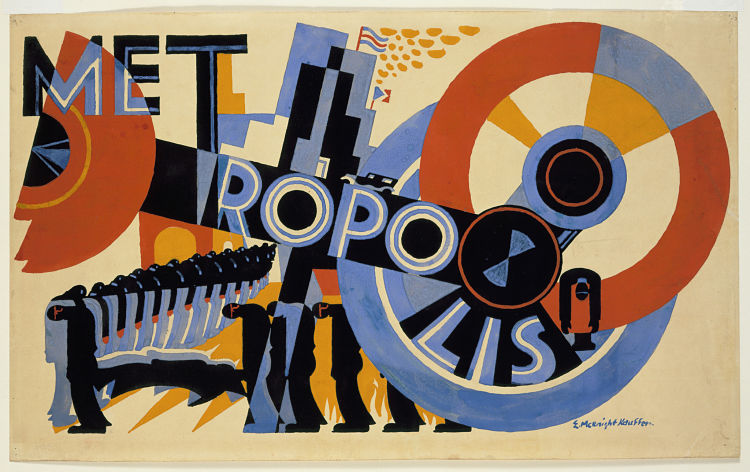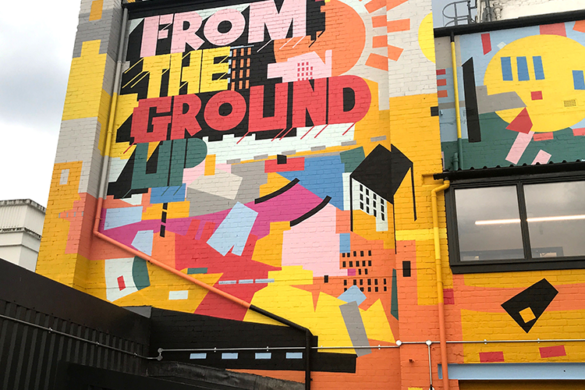While some 20th century graphic design heavyweights feel like part of the very language of the discipline – Herb Lubalin, Milton Glaser, for instance; or more recently, the likes of Paula Scher, Neville Brody and Peter Saville – some of the field’s pioneers’ names are far less ubiquitous.
One such name is E. McKnight Kauffer, who’s deemed a pioneer of commercial art – the name for graphic design before it even had a name.
That’s all set to change this month, however, as a new exhibition celebrating his work goes on show at Cooper Hewitt, Smithsonian Design Museum in New York.
The show, which runs from 10 September 2021 until 10 April 2022 is the largest-ever exhibition of works by the designer, and is titled “Underground Modernist: E. McKnight Kauffer”, with exhibition design and graphics by LucienneRoberts+ and Universal Design Studio.
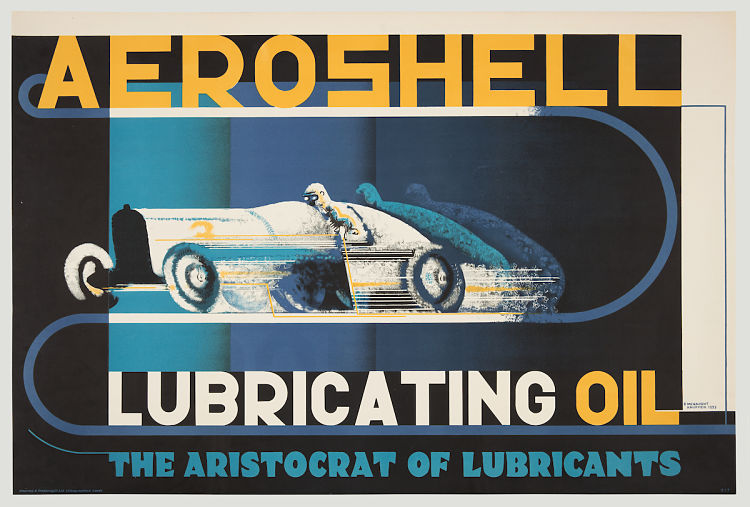
Poster, Aeroshell Lubricating Oil, 1932; Designed by E. McKnight Kauffer (American, 18901954); Published by Shell-Mex and BP Ltd. (London, England); Printed by Chorley & Pickersgill, Ltd. (London, England); Lithograph; 76.2 × 114.3 cm (30 × 45 in.); Merrill C. Berman Collection
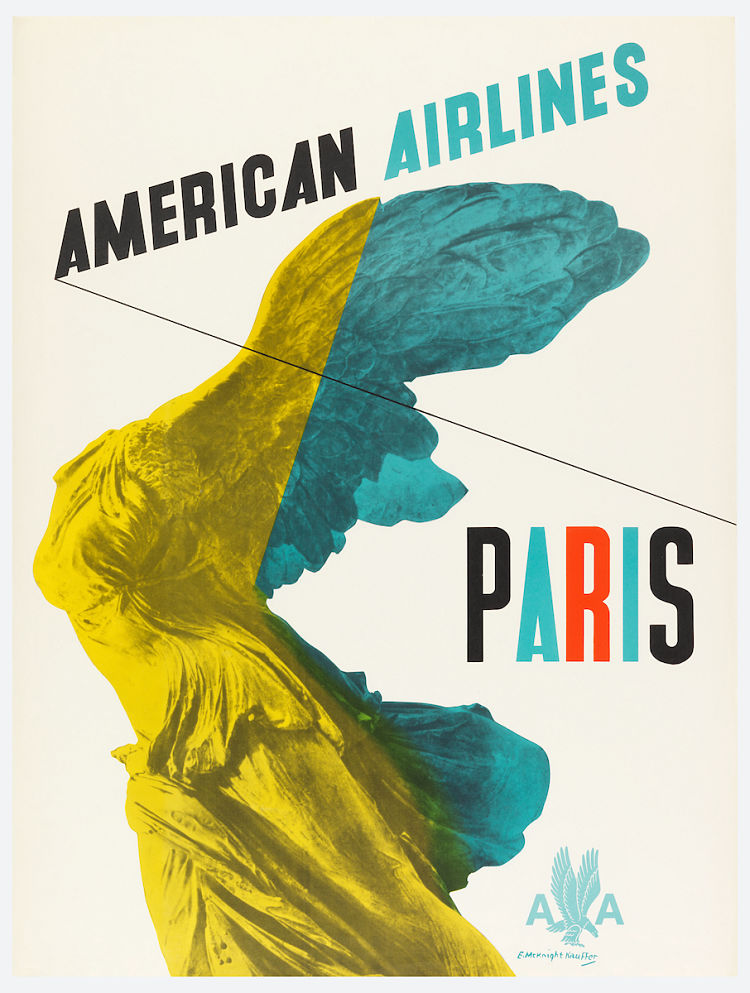
Poster, American Airlines to Paris, 1950; Designed by E. McKnight Kauffer (American, 18901954); Published by American Airlines (Fort Worth, Texas); Lithograph; 107.1 × 79 cm (42 3/16 × 31 1/8 in.); Cooper Hewitt, Smithsonian Design Museum, Gift of Mrs. E. McKnight Kauffer, 1963-39-141; Photo: Matt Flynn © Smithsonian Institution
Cooper Hewitt holds one of the most extensive collections of Kauffer’s designs in the world, with materials in both the Drawings, Prints & Graphic Design department and the Archives department. As such, the exhibition – curated by Caitlin Condell, associate curator and head of Drawings, Prints & Graphic Design at Cooper Hewitt, and Emily M. Orr Ph.D., assistant curator of modern and contemporary American design at Cooper Hewitt – will feature around 200 pieces that work together to examine his impact and legacy.
According to the Cooper Hewitt, Kauffer was hailed as “the poster king” in his lifetime; though he worked across advertising, literature, theatre, transportation and more. In his work for these multifarious sectors, his work was united by its application of “cutting edge styles” and “ emerging avant-garde aesthetics [applied] in provocative ways” that “made modernism accessible,” the organisation adds.
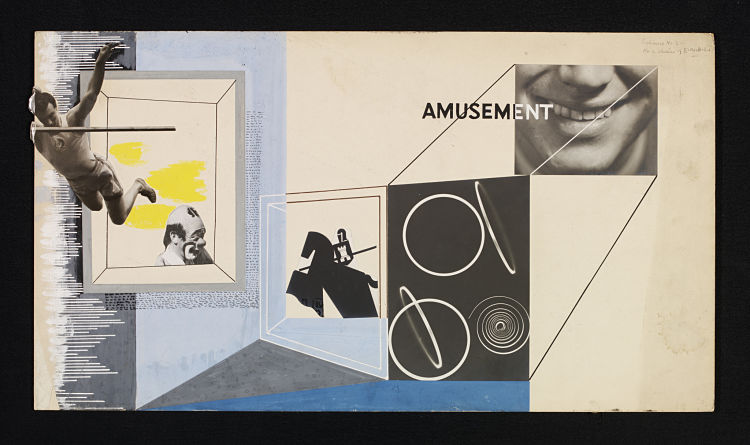
Drawing, Design for Londons New Entertainment Centre, 1936; Designed by E. McKnight Kauffer (American, 18901954); Mixed media, collage, paint, and text; 30.5 × 54.5 cm (12 in. × 21 7/16 in.); Victoria & Albert Museum, London
The exhibition works to both augment and expand on Kauffer’s “poster king” rep, demonstrating his enduring legacy as a designer who was ahead of his time in applying graphic arts principles to numerous commercial and creative ends – and in doing so, building a body of work that resonated with the public then and now.“He transformed the public’s perception of modernism and influenced the work of other equally significant artists, designers and writers on both sides of the Atlantic,” says Condell.
Orr adds, “Motivated by a desire to serve the public, Kauffer brought art closer to all people. He believed that advertising was an opportunity to introduce new visual expression.”
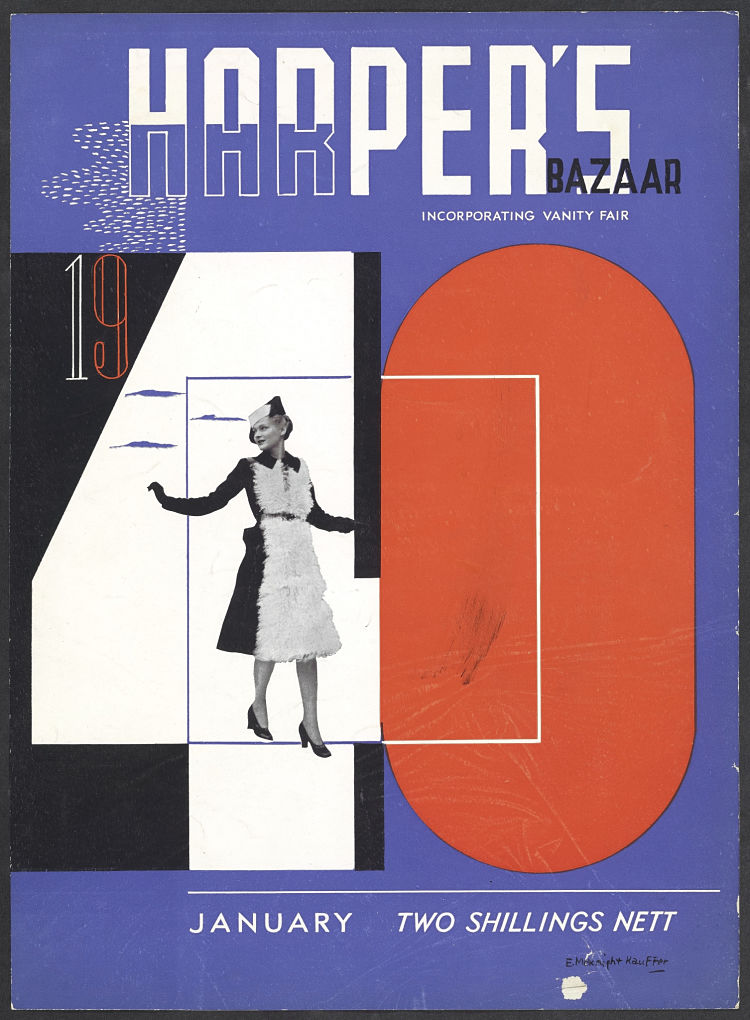
Magazine cover, Harpers Bazaar, January 1940; designed ca. 1939; Designed by E. McKnight Kauffer (American, 18901954); Printed by Hazell, Watson & Viney (Aylesbury, England); Letterpress halftone; 33 x 25 cm (13 x 9 3/4 in.); Cooper Hewitt, Smithsonian Design Museum, Gift of Grace Schulman, 1997-134-1-8; Photo: Matt Flynn © Smithsonian Institution
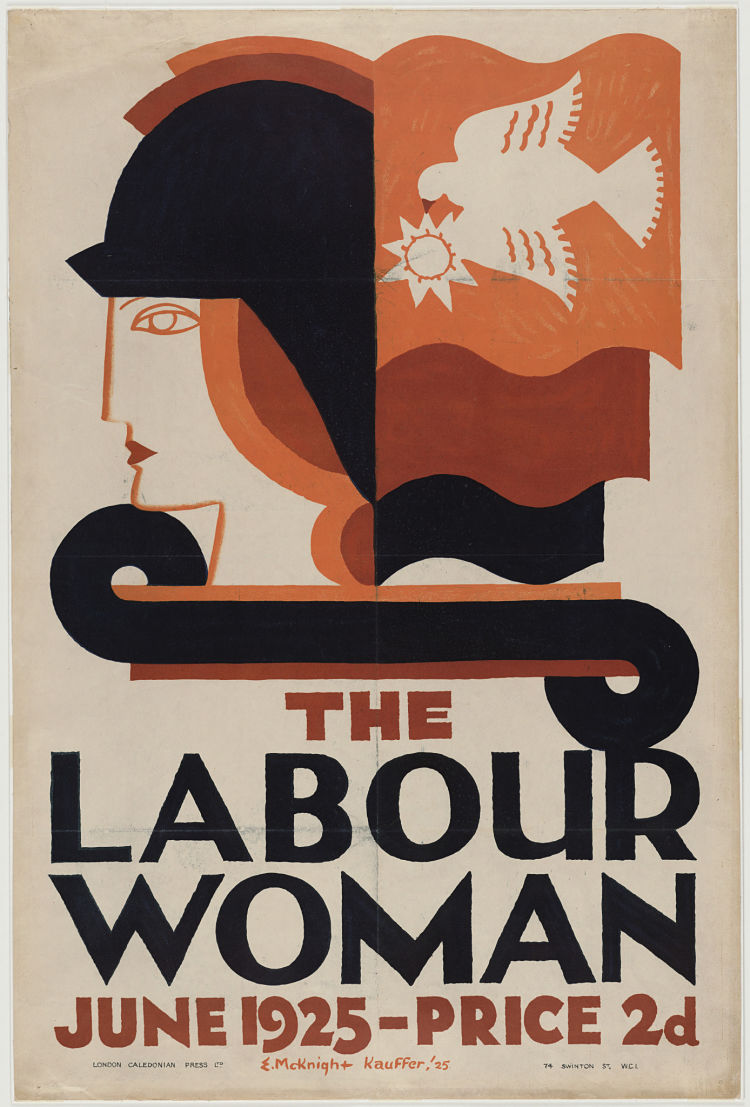
Poster, The Labour Woman, 1925; Designed by E. McKnight Kauffer (American, 1890–1954); Published by Woman’s Labour League, Labour Party (England); Printed by London Caledonian Press Ltd. (London, England); Lithograph; 71.8 × 50.8 cm (28 1/4 in. × 20 in.); The Museum of Modern Art, New York, Gift of the designer, 1939; Digital Image © The Museum of Modern Art/Licensed by SCALA / Art Resource, NY
This desire was enacted through his work outside of the traditional advertising world, collaborating with big-name figures of the time across art, literature, performance and film. Described as a “champion of new media” by the Cooper Hewitt, Kauffer worked on film titles for Alfred Hitchcock’s The Lodger, illustrations for T. S. Eliot’s Ariel poems, costumes for plays and ballets, and covers for novels by the likes of H. G. Wells, Aldous Huxley and Ralph Ellison.
His penchant for newness makes it seem fitting to learn that Kauffer shared a dark room with Man Ray, and met his wife, groundbreaking textile designer Marion V. Dorn, having worked with her. Dorn’s designs will also be highlighted in the exhibition.
The show is split into ten sections ordered by chronology, which trace Kauffer’s career from his early days as a painter in the 1920s and 30s when the American-born artist was living in England.
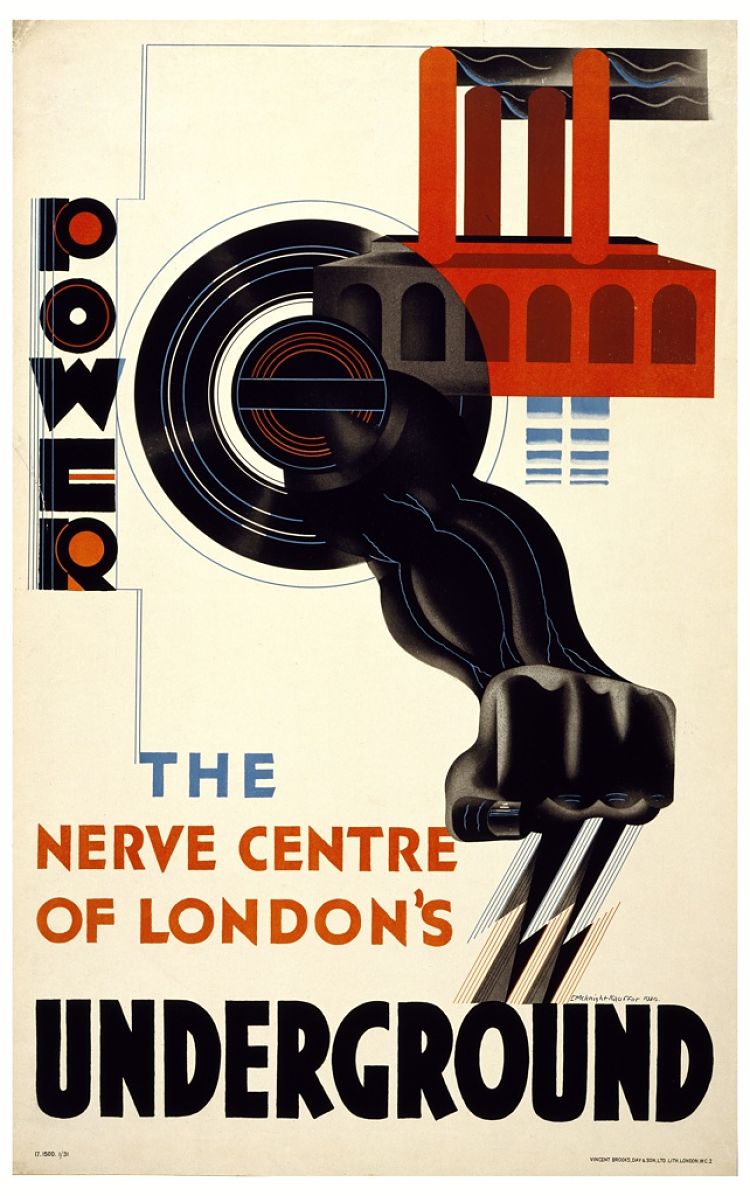
Poster, Power, The Nerve Centre of Londons Underground, 1930, printed 1931; Designed by E. McKnight Kauffer (American, 18901954); Published by Transport for London (London, England); Printed by Vincent Brooks, Day & Son (London, England); Lithograph; 101.6 × 61.4 cm (40 × 24 3/16 in.); Cooper Hewitt, Smithsonian Design Museum, Gift of Mrs. E. McKnight Kauffer, 1963-39-45; Photo: Matt Flynn © Smithsonian Institution
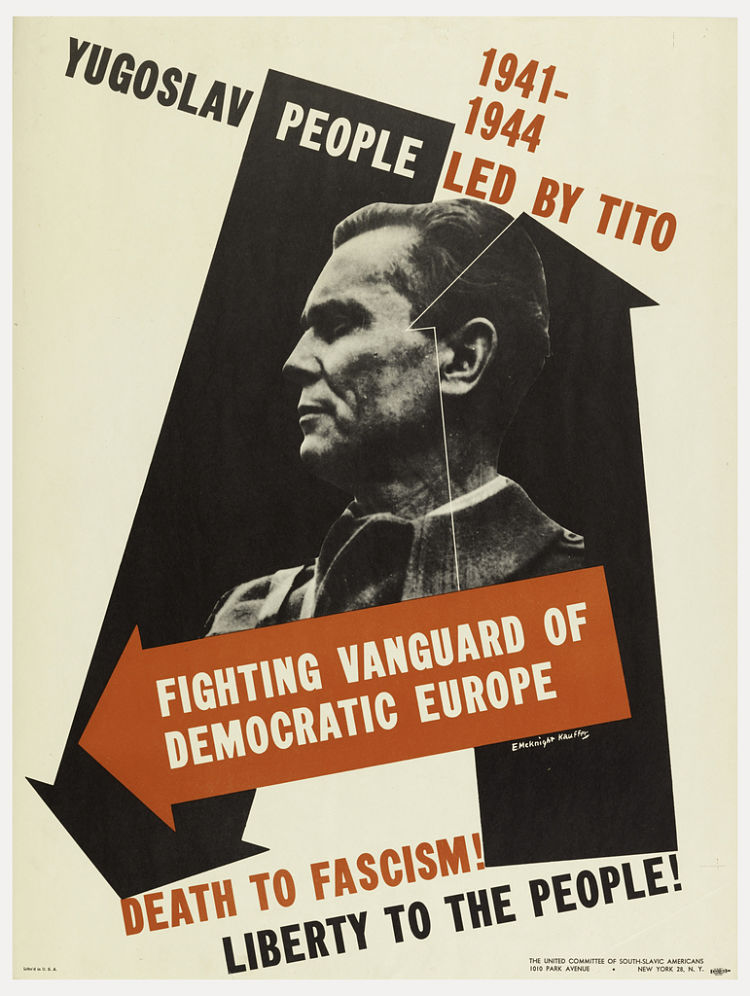
Poster, Yugoslav People Led by Tito, 1944; Designed by E. McKnight Kauffer (American, 18901954); Published by The United Committee of South-Slavic Americans (Chicago, Illinois, USA); Lithograph; 63.5 × 48.3 cm (25 × 19 in.); Cooper Hewitt, Smithsonian Design Museum, Gift of Mrs. E. McKnight Kauffer, 1963-39-114; Photo: Matt Flynn © Smithsonian Institution
He started his career in advertising having moved to New York in 1940, and went on to create posters for the London Underground and graphics for major corporations such as Shell-Mex and American Airlines to name just a few.
And while the exhibition is largely a celebration of his work, it also acknowledges the flaws and more problematic twinges in Kauffer’s self-proclaimed progressive and an egalitarian views – especially around privilege and race.
Above all, the exhibition aims to examine how Kauffer’s designs “expressed and challenged the energy, ideas and unrest of his time,” says Cooper Hewitt. “Over the course of four decades, he responded to the quickening pace of contemporary life by capturing the attention of a fast-moving public. His dedication to design as a social responsibility guided his distinguished career and defines his legacy.”
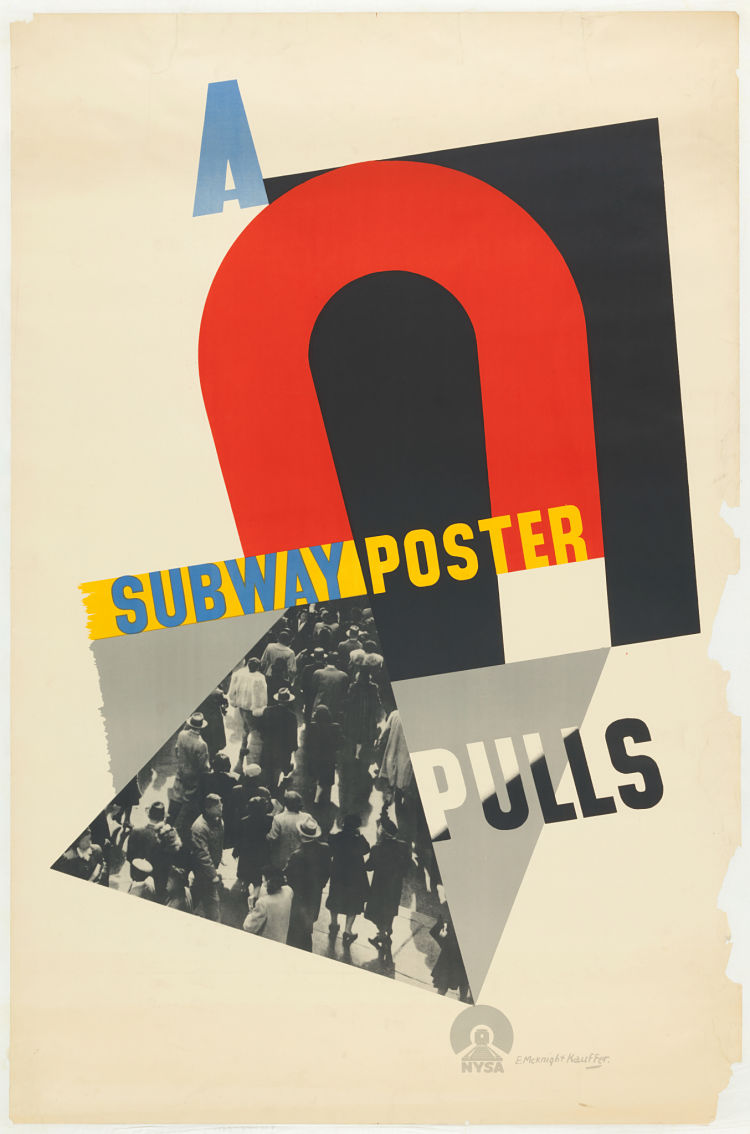 There’s a bittersweet sense of irony, then, in a museum exhibition that underscores Kauffer’s belief that art should be part of everyday life – not something relegated to gallery walls.
There’s a bittersweet sense of irony, then, in a museum exhibition that underscores Kauffer’s belief that art should be part of everyday life – not something relegated to gallery walls.
“The artist in advertising is a new kind of being,” Kauffer wrote in 1938. “His responsibilities are to my mind very considerable. It is his business constantly to correct values, to establish new ones, to stimulate advertising and help to make it something worthy of the civilization that needs it.”
- Autobahn - November 26, 2021
- Alphabetical - November 12, 2021
- SOFA Universe - November 8, 2021

